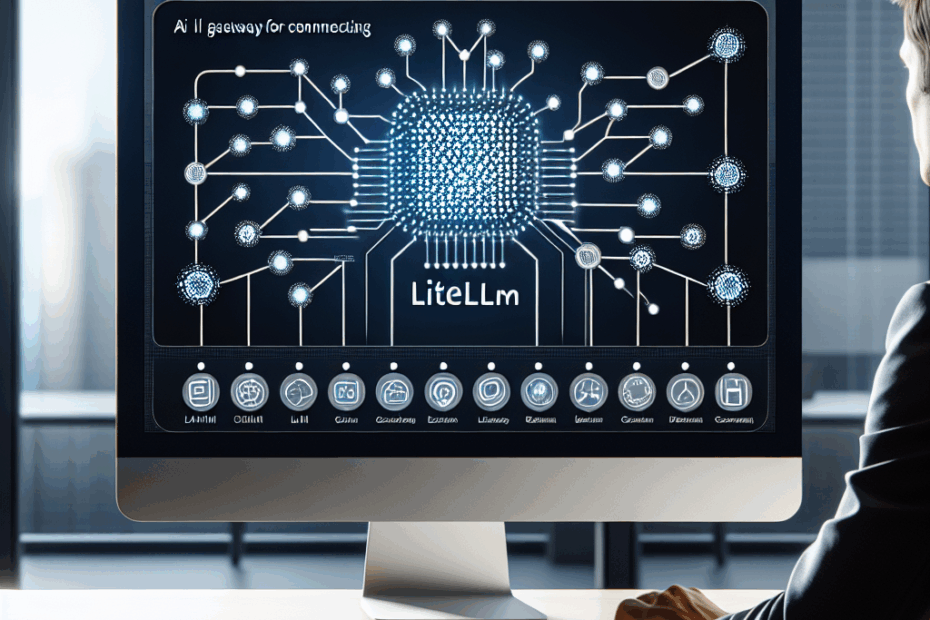“`html
Tired of AI Jargon? Let’s Talk About LiteLLM!
Hey everyone, John here! Today, we’re diving into something called LiteLLM. Now, before your eyes glaze over, trust me, this is actually pretty cool, especially if you’re interested in AI but don’t want to get bogged down in technical details.
The Problem: Too Many AI Models, Too Many Complicated APIs
So, imagine you want to use AI to write a poem, answer questions, or even generate images. There are tons of AI models (think of them as different “brains”) out there from companies like Google, Microsoft, and OpenAI. Each “brain” has its own way of communicating with you – its own special language or API. This can get really confusing, really fast. It’s like trying to use a universal remote that only works with one brand of TV!
Lila: John, what’s an API? I’ve heard that term thrown around a lot.
John: Great question, Lila! An API (Application Programming Interface) is basically a set of rules and tools that allows different software programs to talk to each other. Think of it as a waiter in a restaurant. You (the application) tell the waiter (the API) what you want, and the waiter goes to the kitchen (the AI model) to get it for you. Each restaurant (AI model) might have different waiters (APIs) who speak different languages (have different input/output formats).
LiteLLM to the Rescue: Your Universal AI Remote
That’s where LiteLLM comes in! It’s like a universal remote for all these AI “brains.” It lets you talk to over 100 different AI models using the same simple language. No more learning a new language for each AI!
Think of it this way: if you have a bunch of different game consoles, LiteLLM is like having one controller that works with all of them. You don’t have to switch controllers every time you want to play a different game. It simplifies everything.
Why is This a Big Deal?
- Easy Switching: You can easily switch between different AI models without having to rewrite your code.
- Faster Integration: It makes it faster to use the latest and greatest AI models in your projects.
- Less Headaches: It takes away the pain of managing different APIs and formats.
How Does It Work?
LiteLLM has two main parts:
- The Python SDK: A set of tools you can use in your Python code to easily access different AI models.
- The Proxy Server: A central hub that manages all your AI requests, helping you track costs, control access, and monitor usage.
Lila: John, what’s Python? I thought we were talking about AI!
John: Another excellent question, Lila! Python is a popular programming language. Think of it like a set of instructions you give to a computer to tell it what to do. The LiteLLM Python SDK makes it easier to write those instructions to use AI models. Don’t worry, you don’t need to be a Python expert to benefit from LiteLLM; it’s designed to be user-friendly.
Solving Common AI Problems
LiteLLM helps solve a lot of common problems developers face when working with AI:
- API Differences: It makes all the different AI models “speak the same language.”
- Provider Outages: If one AI model is down, LiteLLM can automatically switch to another one.
- Cost Tracking: It helps you keep track of how much you’re spending on each AI model.
Imagine This Scenario
Let’s say you’re building an app that uses AI to summarize news articles. You want to use both OpenAI’s GPT-4 and Google’s Gemini. Without LiteLLM, you’d have to write separate code for each model. With LiteLLM, you can use the same code and just switch the model name!
Cool Features
- Dynamic Fallbacks: Automatically switch to a backup AI model if the primary one fails.
- Structured Outputs: Ensure the AI’s responses are in the format you expect, reducing errors.
Enterprise-Grade Features
For larger companies, LiteLLM also offers:
- Multi-Cloud Orchestration: Distribute AI requests across different providers like Azure and AWS.
- Cost Governance: Set budgets and monitor spending in real-time.
- Audit Compliance: Securely log all AI requests and responses for regulatory compliance.
John’s Perspective
I’ve been following AI for a while, and LiteLLM is a game-changer. It simplifies the process of working with multiple AI models, making it accessible to more developers and businesses. The open-source nature is also a big plus, fostering community contributions and continuous improvement.
Lila’s Perspective
Wow, John, that actually makes sense! I still have a lot to learn about the technical details, but LiteLLM sounds like a really helpful tool for making AI easier to use. I can see how it would save a lot of time and effort.
This article is based on the following original source, summarized from the author’s perspective:
LiteLLM: An open-source gateway for unified LLM
access
“`
